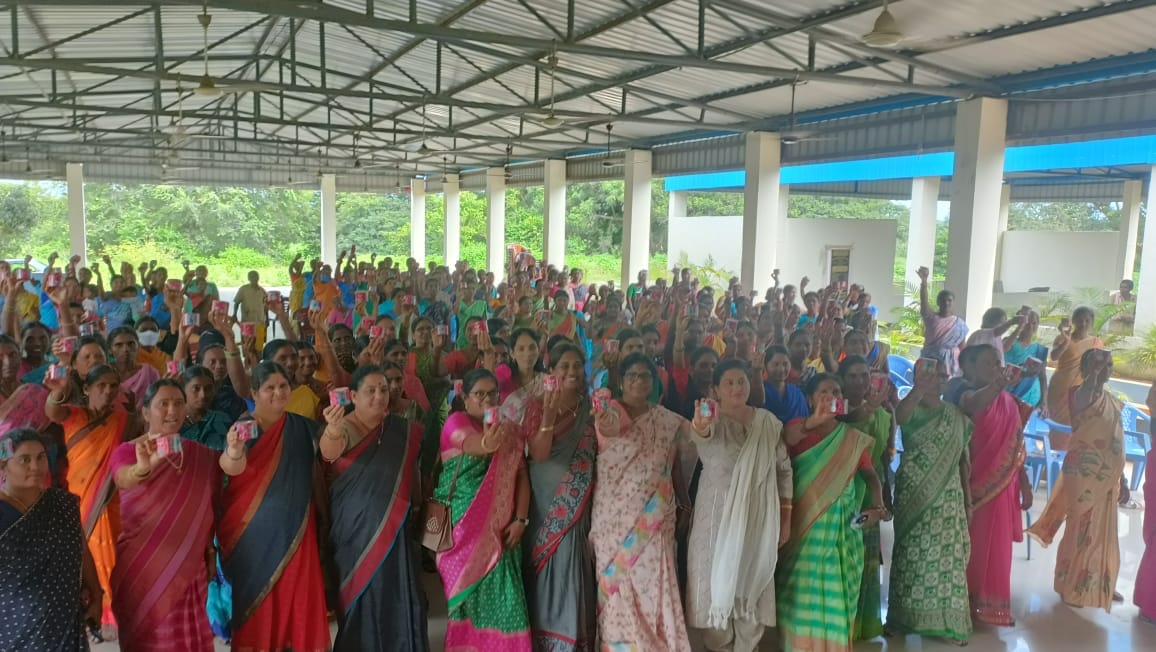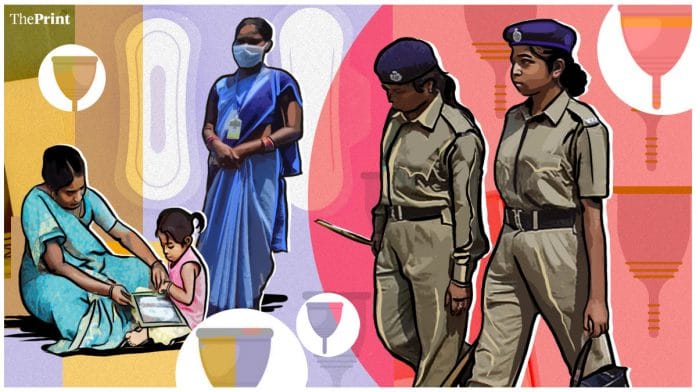Speaking in public about women’s periods is largely considered taboo in India. So, Telangana’s Siddipet District Police Commissioner N. Swetha hesitated a little at first. But she spoke about menstrual health anyway. Then health minister T. Harish Rao showed no inhibition either. Now, ‘Mission Menstrual Cups’ is gaining momentum.
Their remarks were just baby steps. The goal was much bigger – to bring menstrual cups to lakhs of women in Siddipet and stop them from using unhygienic rags during their periods. Even for those women who had ditched the cloth and moved to sanitary pads, there was the problem of disposal. Drains were beginning to clog. The administration had to arrest the environmental damage quickly.
But policewoman Swetha wanted her department to practise what she wanted to preach. A menstrual cup was lying idle for three years in her own cupboard.
So, as the first step, she started using a menstrual cup and slowly convinced 160 of her women police staff to do the same. “I realised that before we go out and explain its benefits to others, my staff has to use and experience it,” Swetha told ThePrint. Until this moment, she had never considered the impact sanitary pads had on the environment. It could be an effective strategy to combat India’s landfill problem—12.3 billion tonnes of sanitary napkins are added to the country’s waste pile every year.
But it wasn’t easy convincing those women officers to ditch the decades-old pads for menstrual cups, the usage of which comes with fear and apprehensions for many. What followed was some heavy-duty evangelising – workshops with gynaecologists, directions for use, videos, and the all-important WhatsApp group. The women police officers began sharing their experiences on the group, posting queries and real-time advice.
And just like that, the taboo was broken.

How the pilot programme grew
What started off as a pilot programme in a ward in the district as part of a CSR (Corporate Social Responsibility) project by Bengaluru-based company Stonesoup turned into a full-fledged drive with Harish Rao formally launching an initiative called Rutu Prema (Safe Periods) in Siddipet in April. The aim was to promote sustainable and healthy menstrual habits. And as part of the initiative, the district administration is now working toward getting six lakh menstruating women to use cups.
“It is an ambitious target, but we will slowly work on it. The first step is to get the behavioural change where women can talk about it openly,” says district additional collector Muzzamil Khan.
In India, there’s not much dialogue about menstrual cups on mainstream media platforms or over-the-counter sales of the product. “We realised that frontline workers are the best people to take this awareness to the grassroots level,” Khan adds.
Mission Menstrual Cups is now almost like an election or census exercise. It has enlisted government officers, teachers, and healthcare workers into spreading the message.
From police to panchayat secretaries and women employees in the department to Anganwadi, ASHA (Accredited Social Health Activist) workers, and women in healthcare — about 7,000 female frontline workers in the district have been given menstrual cups after attending awareness sessions. All government school teachers were first explained about the benefits and then asked to buy the cups at a subsidised price.
Oppenness to talk
As the campaign gathered steam, there was more and more willingness to talk about menstruation—one woman, one family, one village at a time.
When Panchayath Secretary of Gurralagondi village Aruna Sri got a call at 11 pm, she spent the following 20 minutes explaining how to use a menstrual cup to a woman who just got her period. “I was surprised, but then I was also happy that women were actually considering this option. I told her how to fold it so that it fitted well. She was very scared of hurting herself or damaging her body, but I kept talking to her throughout,” she says.
This openness to talk did not happen overnight, and there’s still a long way to go, according to Aruna Sri who went from door to door in the district’s Gurralagondi village talking about menstrual cups.
She also went to agricultural fields, showing ASHA workers how to use them. She gathered the women working in the village’s sanitation department and spoke to them as well. Of the 440 menstruating women, 80 per cent now use menstrual cups, Sri says with pride.
Other district officials, too, started documenting their ‘success stories’. According to Swetha, more than 90 per cent of her women police staff have started using menstrual cups, and now, the department is reaching out to the families of male police officers as well.
Another benefit of using the cups is the fact that they don’t leak. Women officers do not worry about staining their clothes after long hours of duty on the field or when they get drenched in the rain.
“My subordinate’s daughter practises cricket on the same ground where I go for a run in the morning. We introduced the idea of using a cup, and once she got used to it, she came and told me how comfortable she was with it, even in her white uniform,” Swetha says.
These conversations make the police officer happy. “What was a secret all my life I am now openly talking about to all the women in my district,” adds Sri. Zilla Parishad chairperson V. Roja Sharma switched to a menstrual cup and got 10 women in her family to use it as well.
“A cup is a better alternative over pads, and it is a one-time investment,” she says. It’s more hygienic than pieces of cloth that are often dried in hidden corners with no sunlight.
Apart from itching, rashes, and skin allergies, which women experience while using sanitary napkins, their long-term effects could also include endocrine disruption, say doctors.
The district administration is now reaching out to self-help groups (SHGs) in villages to spread the message further. There are WhatsApp groups with doctors as members in almost every department.
The mission doesn’t end with just getting women to use cups. On the ground, staff follows up with women who’ve made the switch and take their feedback. It’s a constant process based on open communication, and it takes place on the ground.
Also read: Forget Netflix’s Sex Education. A movie director taught Telangana tribal youth in a new way
Virginity myths
The most common worry is how to safely insert a cup. Will it get lost inside? Will it be painful? What about virgins — will the cup tear the hymen? The doubt is being clarified only on personal calls, says Bengaluru-based doctor and environmentalist Shanti Tummala who is also a part of the awareness programme.
“Since the cup requires insertion inside the vagina, a lot of unmarried women in police and other departments were worried that it could damage their hymen, which itself is a myth,” she says.
Even women officers and personnel within the administration would call her to discuss this. “They would tell me that their mothers are objecting to using the cup because they’re not yet married and insertion could damage their virginity and hurt their prospects of getting married,” Dr Shanti told ThePrint.
The doctor had to explain to them that the “whole virginity concept” as portrayed is a myth. After all, even intense physical activity could cause the hymen to break. “We also tell them that cups, in no way, cause any damage,” she adds.
All the patience and effort is paying off. Already, 15,000 women in the district are using cups; the target is to take it to one lakh by next year.
(Edited by Humra Laeeq)






